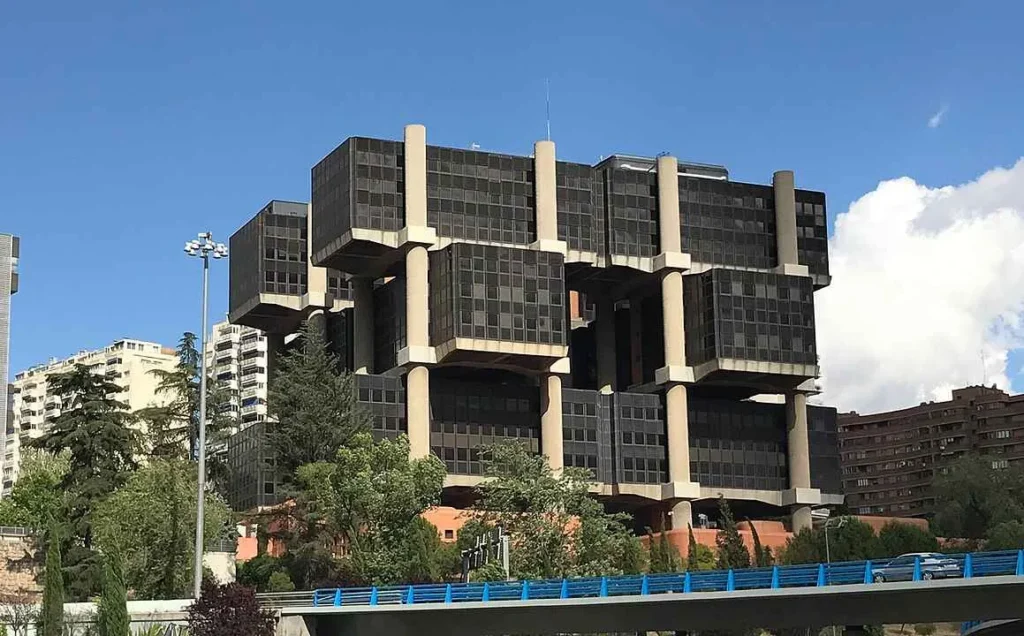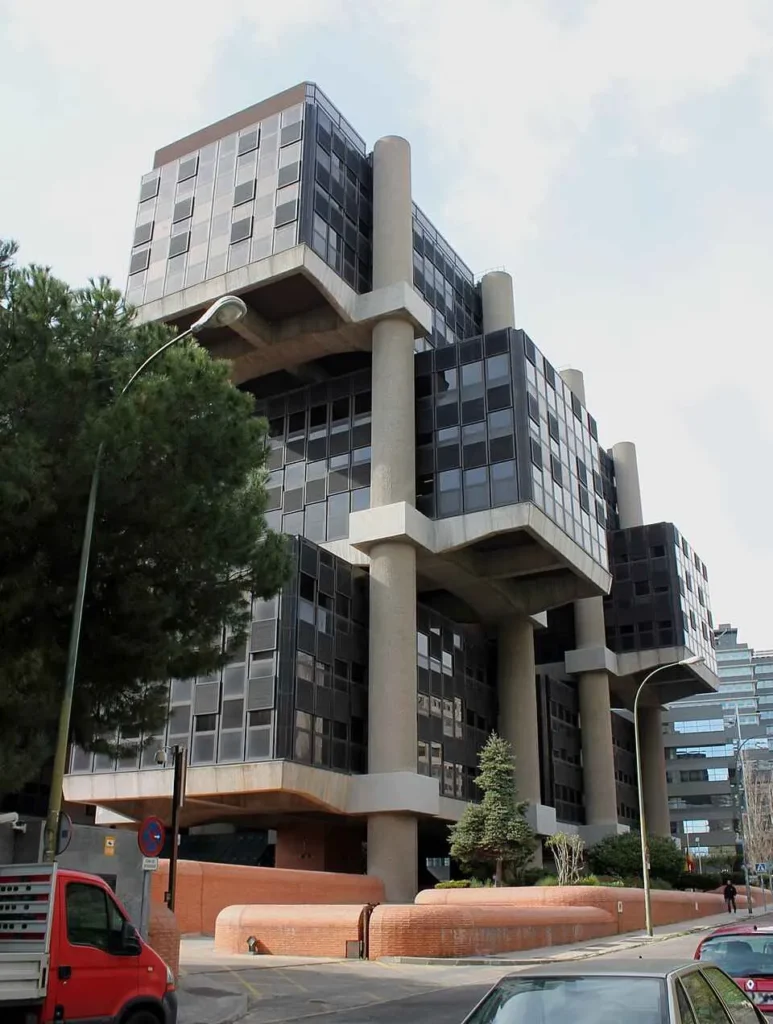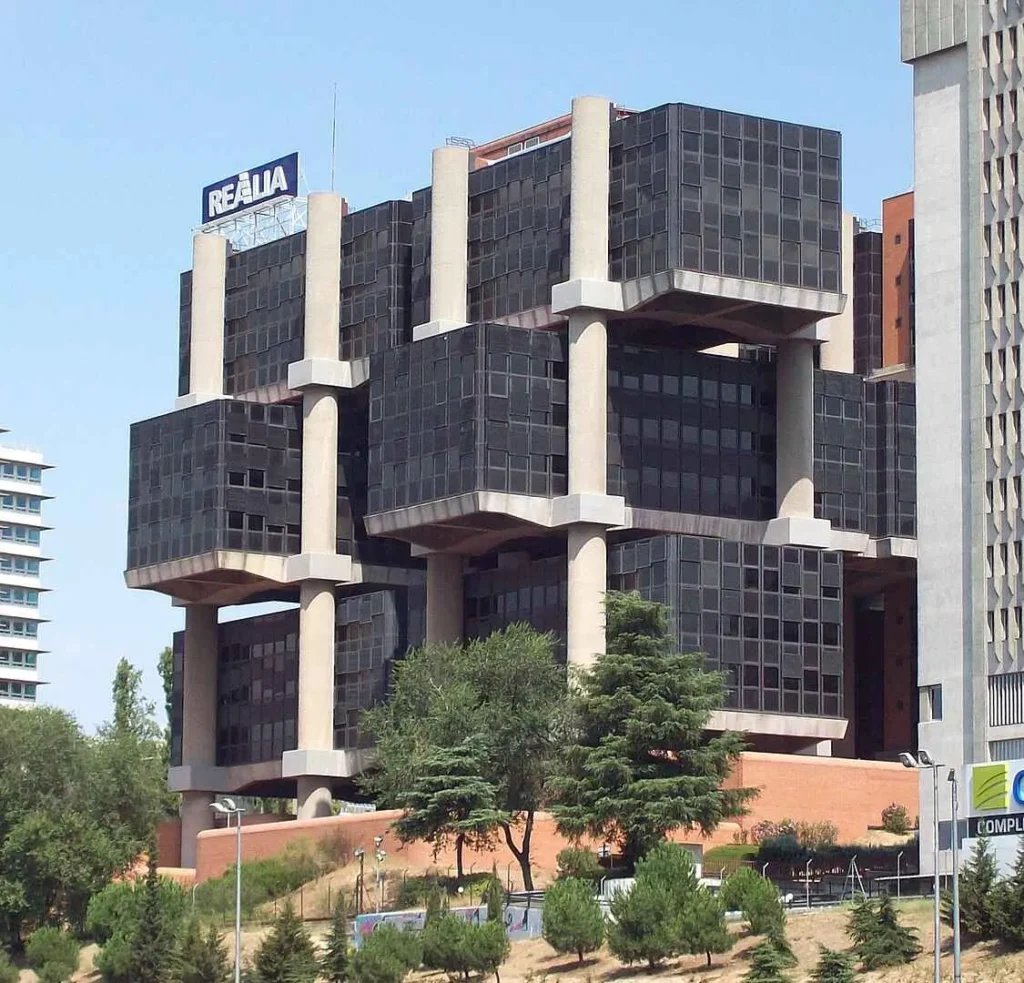The M-30 is more than just a road. It’s a living scar that embraces Madrid. Every day, over 300,000 vehicles flow through it like blood being pumped without rest. And if you pay attention—whether driving or sitting in the passenger seat—you’ll spot architectural gems parading past your window: the RTVE tower (El Pirulí), Sáenz de Oiza’s Ruedo, the M-30 Mosque. But there’s one structure that always makes people turn their heads. A building that seems to defy gravity: “Los Cubos.”
Metabolist Architecture
It was born in the 1980s, when architecture still dreamed of the future. Large glass blocks, shaped like suspended parallelepipeds, hung from two massive concrete columns. A hard image to forget, especially when passing between exits 4 and 5 of the M-30.
The project was signed by four French architects back in 1974. The insurance company AGF asked for a spectacular headquarters in Madrid—and they delivered. But the building became something more: a statement. Some loved it. Others despised it.
Its design had a peculiar DNA. Brutalism, yes, but also something else. A distant influence from Japan: Metabolism. A movement that saw cities as living organisms—constantly evolving—with permanent central structures and modular, interchangeable units, like cells. Kenzo Tange was one of its founding minds. And in a way, Los Cubos became his European echo.
Rebirth
Years went by. Los Cubos changed tenants. In the 2000s, it housed Spain’s Ministry of Science and Innovation. Then, in 2011, it became home to the Secretary of State for Research. But later, silence. Disuse. Abandonment.
Until something changed in 2017. Henderson Park acquired the building and decided to bring it back to life. It was a major challenge. Chapman Taylor led the architectural overhaul—rejuvenating an ’80s giant while staying true to its soul.
Everything was renewed: lighting, lobby, materials. The space was redesigned for today—offices, terraces, rest areas. Even the parking was optimized to favor electric vehicles. And they achieved something unexpected: LEED Gold certification. Almost unheard of for a building from that era.



